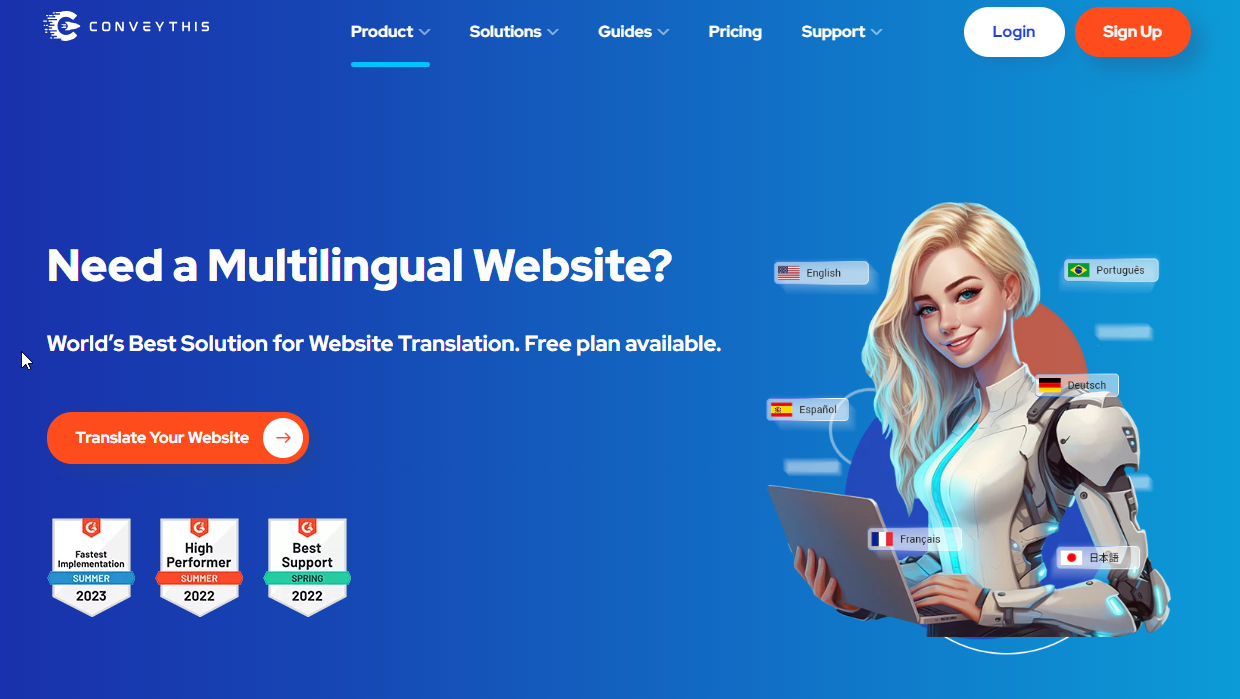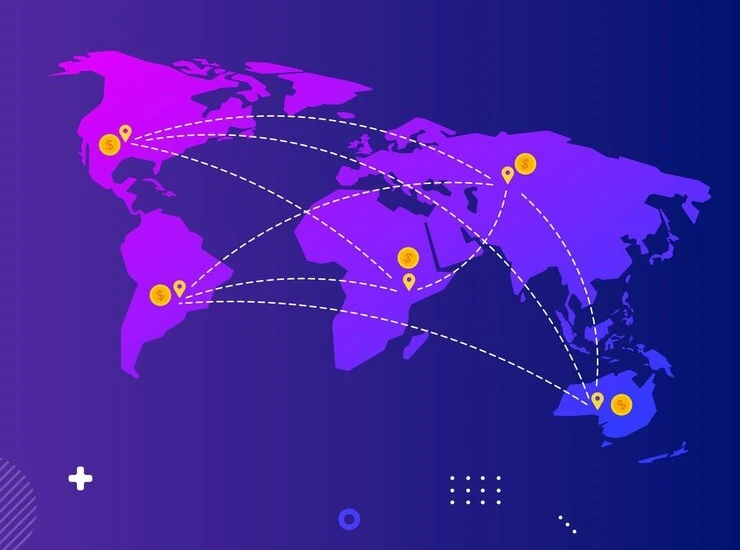Increase Your Sales On Shopify With These Four Ways
Here Are Four Ways to Increase Your Sales on Shopify
Shopify has transformed the e-commerce landscape, providing businesses of all sizes with a seamless platform to sell goods and services online. Since its inception, Shopify has facilitated substantial economic growth, with thousands of merchants generating billions in revenue. As of August 2017, over 600,000 Shopify stores worldwide had collectively generated more than $55 billion in total sales.
For many store owners, the central challenge is discovering ways to increase sales and maximize profits. Whether you’re a new entrepreneur or an experienced seller, adopting the right strategies can significantly enhance your business’s growth. This article outlines four key methods to effectively increase your Shopify sales.
Shopify has transformed the e-commerce landscape, providing businesses of all sizes with a seamless platform to sell goods and services online. Since its inception, Shopify has facilitated substantial economic growth, with thousands of merchants generating billions in revenue. As of August 2017, over 600,000 Shopify stores worldwide had collectively generated more than $55 billion in total sales.
For many store owners, the central challenge is discovering ways to increase sales and maximize profits. Whether you’re a new entrepreneur or an experienced seller, adopting the right strategies can significantly enhance your business’s growth. This article outlines four key methods to effectively increase your Shopify sales.
1. Leverage Shopify Apps to Enhance Product Visibility and Sales
Shopify offers a vast range of applications designed to enhance store functionality, simplify processes, and increase sales. These apps help with marketing, SEO, automation, and customer engagement. However, with so many options available, selecting the right apps for your store can be overwhelming.
To make an informed decision, visit the Shopify App Store and browse through different categories. Focus on the Places to Sell section on the left-hand side to find apps specifically designed for marketing and sales optimization.
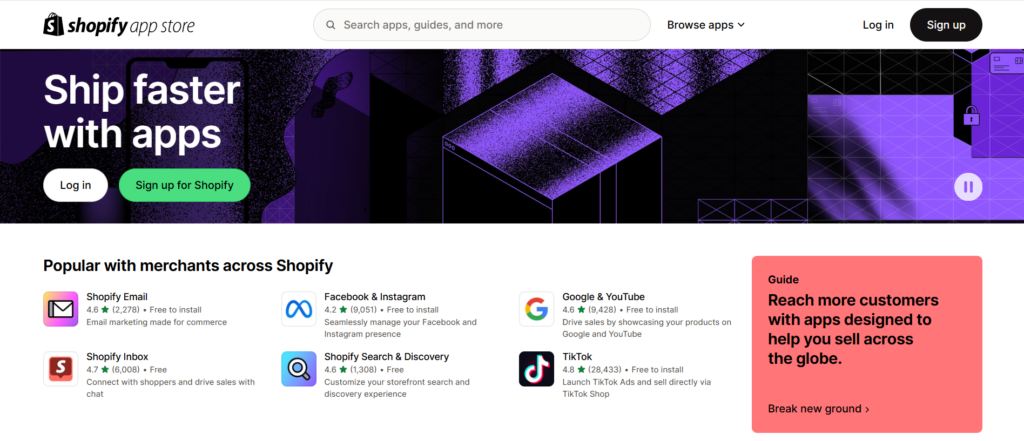
Utilizing apps like automated email marketing tools, social media integrations, and customer retention software can significantly improve your store’s performance. Conduct thorough research to identify which apps align best with your business needs and goals.
Additionally, leveraging apps that offer abandoned cart recovery, upselling, and cross-selling features can boost conversion rates. For instance, using an app that sends follow-up emails with personalized discount codes can encourage hesitant shoppers to complete their purchases. Similarly, apps that provide AI-powered recommendations can help display related products to customers, increasing average order value.
Furthermore, apps that enhance customer support, such as live chat and chatbot solutions, can improve user experience and build customer trust. By offering real-time assistance, you can address concerns quickly and prevent potential lost sales.
Regularly evaluating app performance and keeping up with new releases in the Shopify App Store will ensure you are using the best tools to optimize your store. Be sure to read reviews, test different apps, and monitor analytics to measure their impact on your sales and customer engagement.
2. Maintain a Professional and Engaging Storefront
First impressions matter. While Shopify provides a user-friendly platform with beautiful themes, maintaining a professional, high-quality store requires attention to detail. A well-designed store builds trust and encourages potential customers to make a purchase.
Here are some essential elements to enhance professionalism:
- Use a clean and modern design: Avoid clutter and ensure your website is easy to navigate. Choose a professional theme that aligns with your brand identity and makes browsing seamless.
- Optimize product descriptions and images: High-quality images and well-written descriptions make a significant impact. Use multiple angles and zoom features to give customers a clear view of your products. Highlight key features and benefits in your descriptions to persuade potential buyers.
- Ensure mobile-friendliness: A large percentage of online shoppers use mobile devices, so a responsive design is crucial. Test your store on various devices to ensure it adapts well and provides an excellent user experience.
- Improve page loading speed: A slow website can drive potential customers away. Optimize images, use caching, and minimize unnecessary scripts to improve load times.
- Create an intuitive navigation structure: A clear menu, category filters, and search functionality make it easy for users to find what they need quickly, reducing frustration and increasing conversions.
- Utilize branding elements consistently: Cohesive color schemes, fonts, and logos help establish brand recognition and a polished look.
- Provide clear calls to action (CTAs): Buttons like “Buy Now,” “Add to Cart,” and “Subscribe” should be prominent and compelling to encourage conversions.

- Include trust signals: Displaying customer reviews, secure payment badges, and clear return policies reassures customers and builds credibility.
By prioritizing user experience and visual appeal, you can create a compelling and professional online store that attracts and retains customers, ultimately boosting sales and brand loyalty.
3. Translate Your Shopify Store for a Global Audience
In today’s interconnected world, reaching an international audience is essential for growing your Shopify store. Research shows that over 70% of internet users prefer browsing websites in their native language, and nearly 50% of online shoppers are unlikely to purchase from a website that does not support their language. By providing multilingual support, you can increase engagement, reduce bounce rates, and improve conversions from global visitors.
Why Translation Matters for E-Commerce
- Expands Your Market Reach: By supporting multiple languages, you make your products accessible to a wider customer base.
- Boosts SEO Rankings: Translating your store improves visibility in international search engines, leading to higher organic traffic.
- Enhances Customer Trust: Shoppers feel more comfortable making purchases in a language they understand.
- Increases Sales & Revenue: Customers are more likely to complete a purchase when content is available in their preferred language.
Seamlessly Translate Your Shopify Store with ConveyThis
One of the most efficient ways to add multilingual support to your Shopify store is by using ConveyThis, a powerful translation tool designed for e-commerce platforms. ConveyThis provides:
- Automatic Translation – Quickly translate your store into multiple languages.
- SEO-Friendly Localization – Ensure translated pages are indexed correctly in search engines.
- Customizable Translations – Edit and refine translations to maintain brand consistency.
- User-Friendly Integration – No coding experience required; easy setup in just a few steps.
Steps to Add ConveyThis to Your Shopify Store:
Go to your admin dashboard and click on “Apps” > “Visit Shopify App Store”. Search for ConveyThis, and once you’ve found us, click on “Install”.
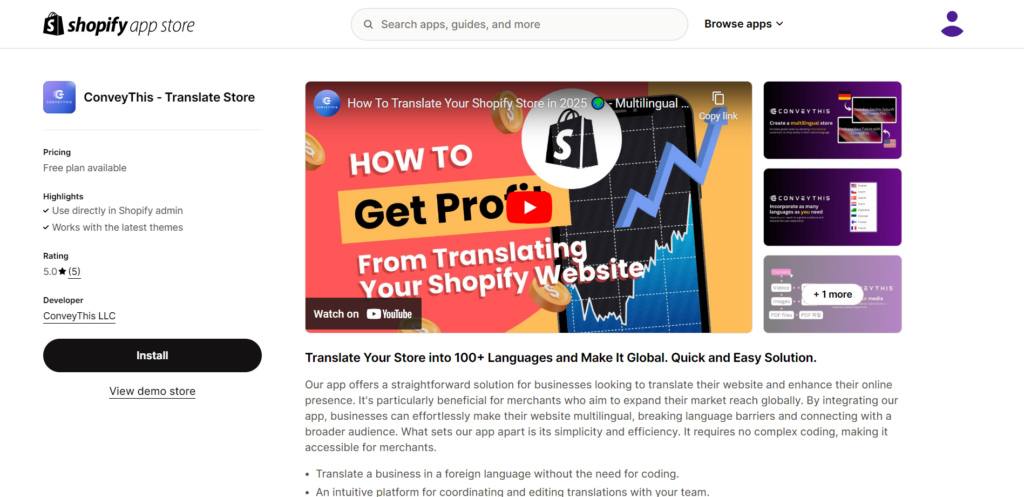
If you already have an existing ConveyThis account, you’ll be able to directly create a new project or reuse an existing project if needed.
If you don’t have an account, all you need is to enter a valid e-mail address and a password to start your 14-day Pro Trial.
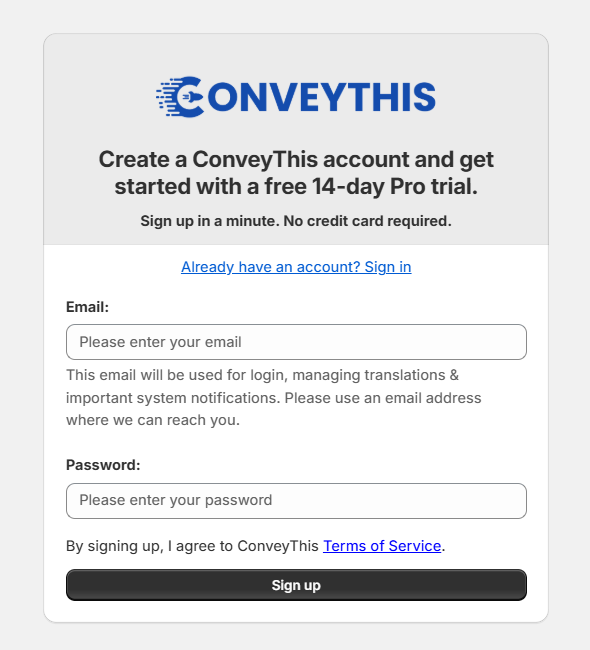
Once you’ve set up your ConveyThis account, you’ll be asked to choose the language your store is currently written in, and the language(s) you’d like to translate it to.
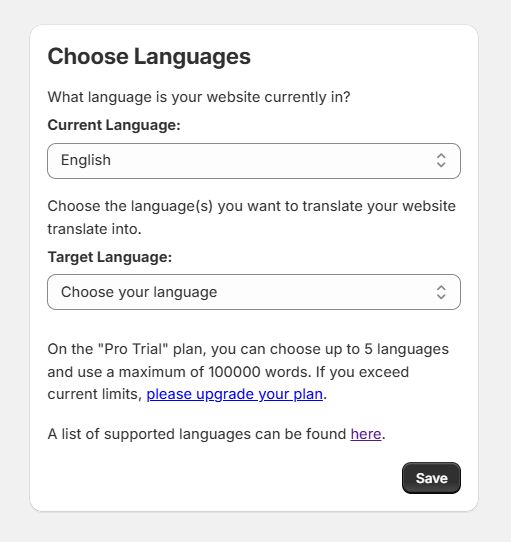
Once the languages are defined, you’ll need to activate ConveyThis in your theme. To do so, click on the “Activate” button.
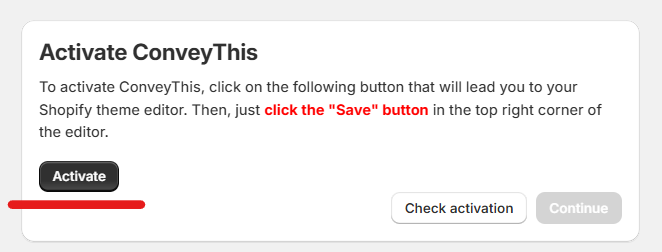
After which you will need to click the “Save” button at the top right corner of the editor.
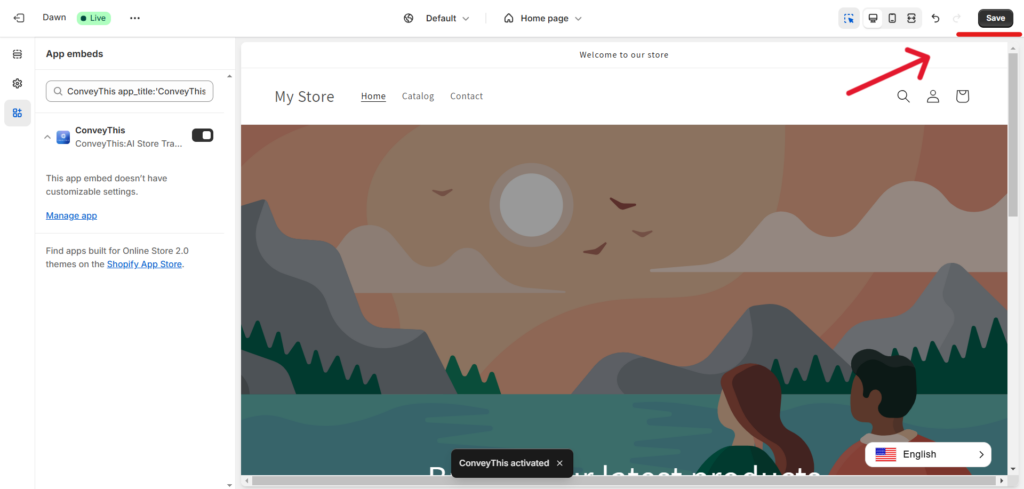
Once saved, you can return to this page and click “Check activation” to finalize the integration.
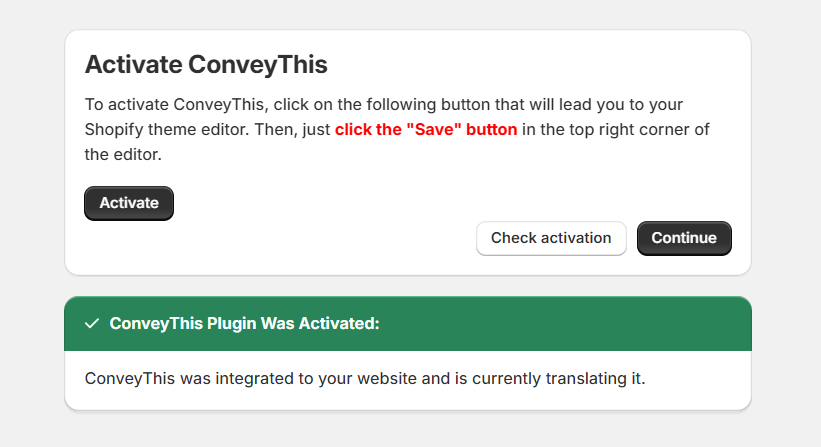
Now that your store has the ConveyThis plugin activated, you can start customizing your translations and/or the appearance of your language-switch button by clicking “Return To Dashboard”.

Install the ConveyThis Plugin Through Copy & Paste
If you would like to choose a different route on the installation process for the ConveyThis widget, you could always try to Copy & Paste our code snippet.
First, you’ll have to navigate to to Shopify Admin > Online Store > Themes and in here you’ll see the “…” button.
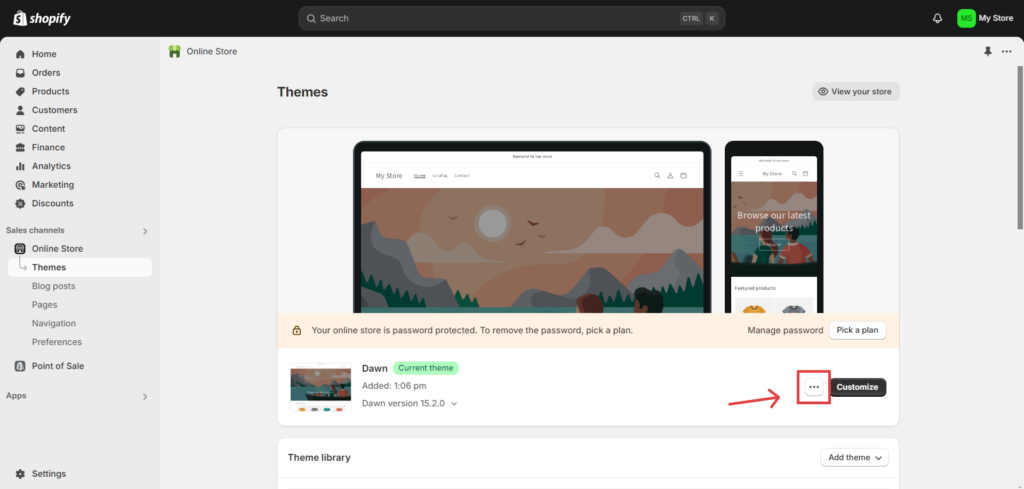
Once you’ll press on the “…” button, you’ll get a list of options, and among them, choose the “Edit code” option.
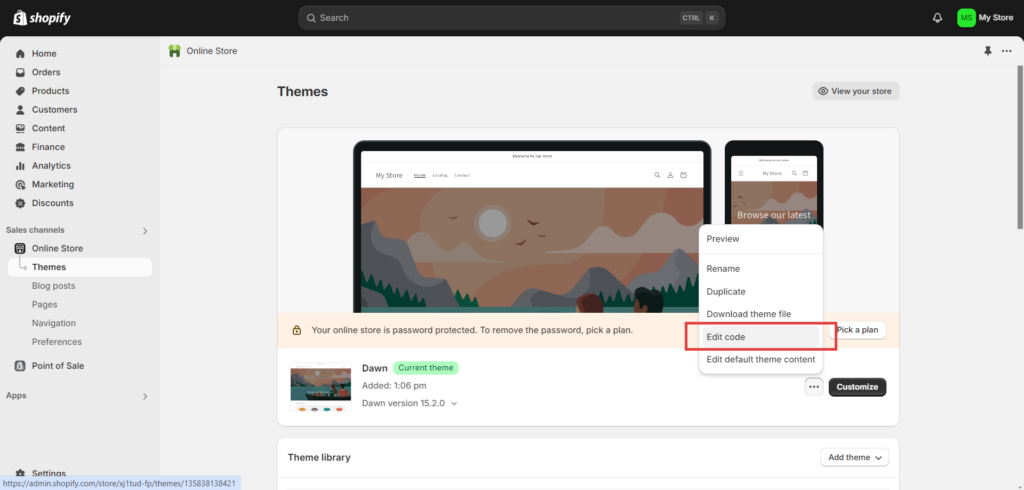
Once you navigate to “Edit code“, insert the provided code snippet into the theme.liquid file, just before the closing </head> tag.
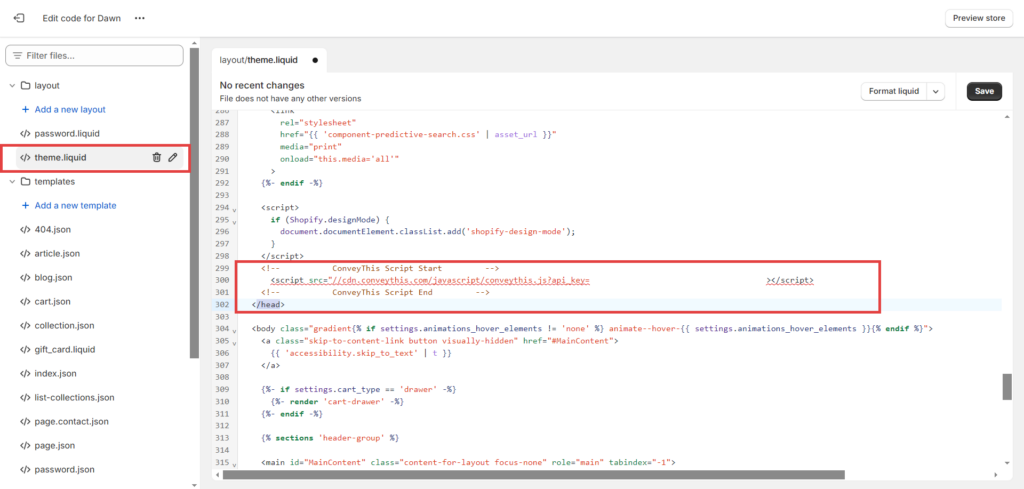
That’s it. Go to your website and see the language-switch button at the bottom right. It might take a few minutes to appear, so don’t worry if you must wait a bit.
Optimizing Your Multilingual Store
- Customize Translations: Review and refine translations to match your brand voice.
- Localize Currency & Payment Methods: Ensure that prices, checkout options, and payment gateways align with customer preferences in different regions.
- Use Hreflang Tags: Improve international SEO by signaling search engines which language version to display.
- Analyze Performance: Track international traffic, engagement, and conversion rates using Shopify analytics.
4. Utilize Influencer Marketing to Drive Sales
In today’s digital landscape, influencer marketing has become one of the most effective strategies for driving sales and increasing brand awareness. Social media influencers have built trust with their audiences, making their recommendations highly influential in purchasing decisions. In fact, 70% of consumers purchase beauty products after seeing them recommended by influencers on Instagram. The same principle applies across various industries, including fashion, tech, fitness, and home goods.
By leveraging influencer marketing, you can tap into established communities, generate authentic engagement, and drive high-converting traffic to your Shopify store.
Benefits of Influencer Marketing for Shopify Stores
- Increases Brand Awareness – One of the most powerful aspects of influencer marketing is its ability to introduce your brand to a large, highly engaged audience. Influencers often have built-in communities of followers who trust their opinions and are actively looking for new products and services. When influencers promote your Shopify store, they act as a bridge, connecting your brand to thousands or even millions of potential customers. This expanded reach can be especially valuable for new or niche businesses seeking to establish a strong presence in their industry. Additionally, influencer collaborations often generate buzz, leading to more organic mentions and discussions about your brand, which further amplifies its visibility.
- Boosts Credibility & Trust – Trust is essential in today’s competitive e-commerce landscape, and influencer marketing provides an authentic way to build it. Consumers are more likely to trust recommendations from influencers they follow than traditional advertising or marketing campaigns. Influencers have already cultivated relationships with their followers, who value their opinions and view them as experts in their respective fields. When an influencer endorses your Shopify store or products, it adds a layer of credibility, making potential customers more likely to trust your brand and feel confident in making a purchase. This type of social proof is incredibly valuable in convincing skeptical buyers and driving brand loyalty.
- Drives Targeted Traffic – Unlike broad, generalized marketing tactics, influencer partnerships allow you to tap into highly targeted, niche audiences that are already aligned with your brand. Influencers have specific followings based on their interests, passions, and expertise, which means their audiences are often highly relevant to the products or services you offer. For example, a beauty influencer will attract an audience interested in cosmetics and skincare, while a fitness influencer will have followers passionate about health and wellness. By partnering with influencers who cater to your niche, you can drive qualified, highly engaged traffic to your Shopify store, resulting in better leads, higher engagement rates, and more meaningful interactions with potential customers.
- Improves Conversion Rates – Influencer marketing leverages the power of word-of-mouth, one of the most effective forms of marketing. Consumers trust recommendations from individuals they admire, and when those influencers promote your products, their followers are more likely to act on those recommendations. This can have a direct impact on conversion rates, as shoppers are more inclined to make purchases based on a trusted source’s endorsement. Furthermore, influencer content, whether it’s a product review, tutorial, or unboxing, provides valuable, authentic social proof that can help persuade potential buyers to complete their purchases. The power of word-of-mouth, combined with the targeted nature of influencer campaigns, makes influencer marketing a key driver in improving overall sales performance for your Shopify store.
Steps to Leverage Influencer Marketing Effectively
1. Identify the Right Influencers
Choosing the right influencer is crucial for a successful campaign. Here’s what to consider:
- Relevance: Find influencers whose content aligns with your niche (e.g., beauty, fashion, fitness, home decor, tech).
- Engagement Rate: High engagement (likes, comments, shares) is more important than just follower count.
- Audience Demographics: Ensure their followers match your target market in terms of age, location, and interests.
- Platform Preference: Instagram, TikTok, YouTube, and Pinterest are popular for product promotions, but the right platform depends on your industry.
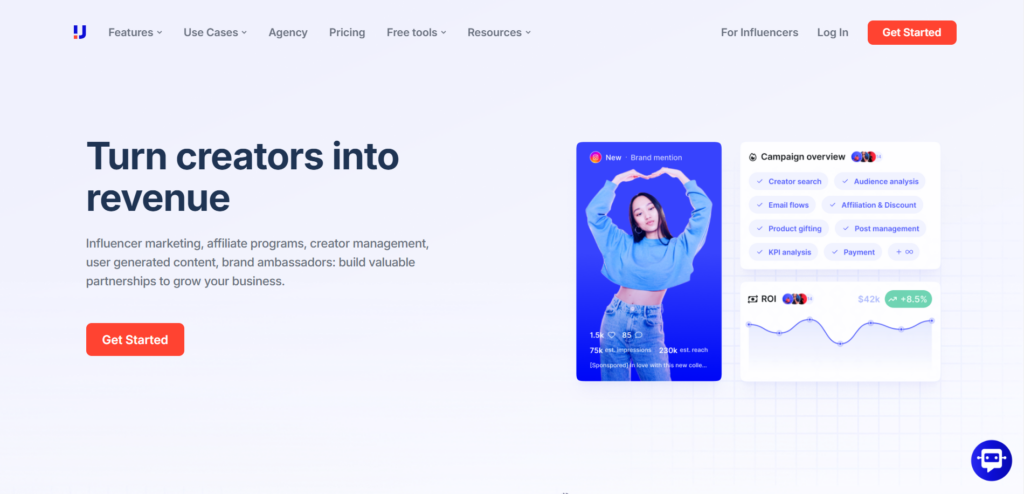
Use tools like Upfluence, AspireIQ, or Heepsy to find influencers that fit your brand.
2. Build Authentic Relationships
Before reaching out for a collaboration, it’s important to build a strong, genuine relationship with potential influencers. This approach not only sets the tone for a successful partnership but also increases the likelihood of the influencer being more receptive and enthusiastic about promoting your Shopify store. Here’s how you can effectively engage with potential influencers before initiating a collaboration:
- Follow Their Accounts and Interact with Their Posts – One of the simplest yet most effective ways to begin building rapport with an influencer is by following their social media accounts and actively engaging with their content. Take the time to read their posts, watch their stories, and familiarize yourself with their interests, values, and the type of content they produce. By liking and commenting on their posts, you show genuine interest in what they share and begin to establish your presence in their community. However, it’s essential to ensure that your interactions are authentic—simply liking posts or leaving generic comments may come across as superficial. Instead, engage with the content in a way that shows you’ve truly connected with it.
- Leave Thoughtful Comments and Share Their Content – Instead of just liking posts, take the extra step of leaving thoughtful and meaningful comments. Offering insightful feedback or asking relevant questions shows that you are paying attention to the influencer’s work and have a genuine interest in what they do. When you leave comments that are specific to the content—such as praising their creativity, offering a compliment on their expertise, or discussing how their post resonates with you—it demonstrates a more personal connection. Additionally, sharing their content with your own followers can be a powerful gesture of goodwill. This not only helps promote their work but also shows that you’re invested in their success, which can foster goodwill and make them more likely to respond positively to your future collaboration request.
- Send a Personalized Direct Message (DM) Showing Genuine Interest in Their Work – Once you’ve built a foundation of engagement through comments and shares, reaching out via a personalized direct message (DM) is the next step in forming a genuine relationship. When sending a DM, make sure to tailor your message specifically to the influencer. Avoid using generic templates, as personalized messages are far more likely to be well received. Start by expressing your appreciation for their content and acknowledging specific posts or projects that you admire. Be clear about why you think a collaboration could be mutually beneficial, and show that you understand their brand and audience. This will demonstrate that you’ve taken the time to research and engage with their work, making the message feel more authentic and respectful.
3. Offer Attractive Collaboration Deals
Different influencers work with brands in different ways, so offer a deal that aligns with your budget and their expectations:
- Gifting: Send free products in exchange for an honest review or post.
- Affiliate Partnerships: Provide a commission for each sale generated through their unique link or discount code.
- Paid Collaborations: Offer a flat fee for sponsored posts, unboxing videos, or product tutorials.
- Long-Term Partnerships: Develop ambassador programs with influencers for consistent brand exposure.
Many micro-influencers (5K–50K followers) accept gifted collaborations, while larger influencers usually require payment.
4. Allow Creative Freedom for Authenticity
Influencers know what resonates best with their audience, so give them the flexibility to create content that feels natural. Authenticity drives better engagement than overly scripted promotions. Popular content formats include:
- Unboxing videos – Showcasing product features.
- How-to tutorials – Demonstrating product usage.
- Testimonials & Reviews – Sharing personal experiences.
- Behind-the-Scenes (BTS) – Giving an exclusive look at the brand.
Consumers respond better to storytelling rather than direct sales pitches.
5. Track Performance & Optimize Campaigns
Tracking the performance of your influencer marketing campaigns is crucial for understanding the impact of your efforts and ensuring that your strategies are delivering the desired results. To effectively measure success, it’s essential to monitor key performance indicators (KPIs) that provide insights into various stages of the customer journey, from initial engagement to final purchase. Here’s a more detailed breakdown of how to track these KPIs and optimize your influencer campaigns for better results:
- Engagement Metrics – Engagement metrics are one of the first and most important indicators of how well your influencer collaboration is resonating with the audience. These metrics include likes, comments, shares, and story interactions on the influencer’s posts related to your brand. High engagement levels indicate that the content is attracting attention and sparking conversations, which is crucial for building brand awareness and generating interest.
- Traffic & Clicks – Another important metric to track is the referral traffic that comes directly from the influencer’s content. By monitoring how much traffic is being directed to your Shopify store through influencer posts, you can gauge how effective they are in generating interest and attracting potential customers.
- Conversions & Sales – Ultimately, the goal of any influencer marketing campaign is to convert engaged visitors into paying customers. To effectively measure conversions and sales, it’s crucial to set up tracking mechanisms that link influencer activity to actual purchases.

Platforms like Google Analytics, Shopify’s built-in reports, and UTM tracking links help you evaluate ROI and optimize future influencer campaigns.
Conclusion:
In conclusion, increasing sales on Shopify is not just about offering great products, but also about implementing a comprehensive strategy that combines cutting-edge technology, a professional approach, and targeted marketing efforts. To achieve sustained growth, it’s essential to make the most out of Shopify apps and tools, which can help optimize every aspect of your store, from product management to customer engagement. Ensuring that your online presence exudes professionalism will build trust with potential customers, while translating your store into multiple languages can open doors to international markets, broadening your reach and increasing sales potential.
Equally important is collaborating with the right social media influencers and leveraging platforms that best suit your target audience. Influencers can boost your credibility and visibility, driving more traffic and conversions. Additionally, focusing on SEO, running effective email campaigns, and utilizing retargeting ads can help you stay visible and keep customers engaged. Staying adaptable and continually analyzing your store’s performance is crucial to understanding what works and what doesn’t. By constantly optimizing your strategies, tracking key metrics, and embracing new trends, you can stay ahead of the competition.
Ultimately, success on Shopify is a combination of persistence, creativity, and utilizing the right tools at the right time. By embracing a multifaceted approach that includes technology, marketing, and personalization, your Shopify store can rise above the competition and thrive in the ever-evolving e-commerce landscape. Keep refining your methods, experimenting with new ideas, and staying engaged with your audience, and you’ll find your store’s revenue and customer base growing steadily over time.
Additional Resources:
- ConveyThis Integrations – To explore compatibility with Shopify.
- How to Translate Shopify Checkout Page – For more guidance.
- Help Guide for Translation Your Shopify Email Notifications – For step-by-step support.
Translation, far more than just knowing languages, is a complex process.
By following our tips and using ConveyThis , your translated pages will resonate with your audience, feeling native to the target language.
While it demands effort, the result is rewarding. If you’re translating a website, ConveyThis can save you hours with automated machine translation.
Try ConveyThis free for 7 days!


